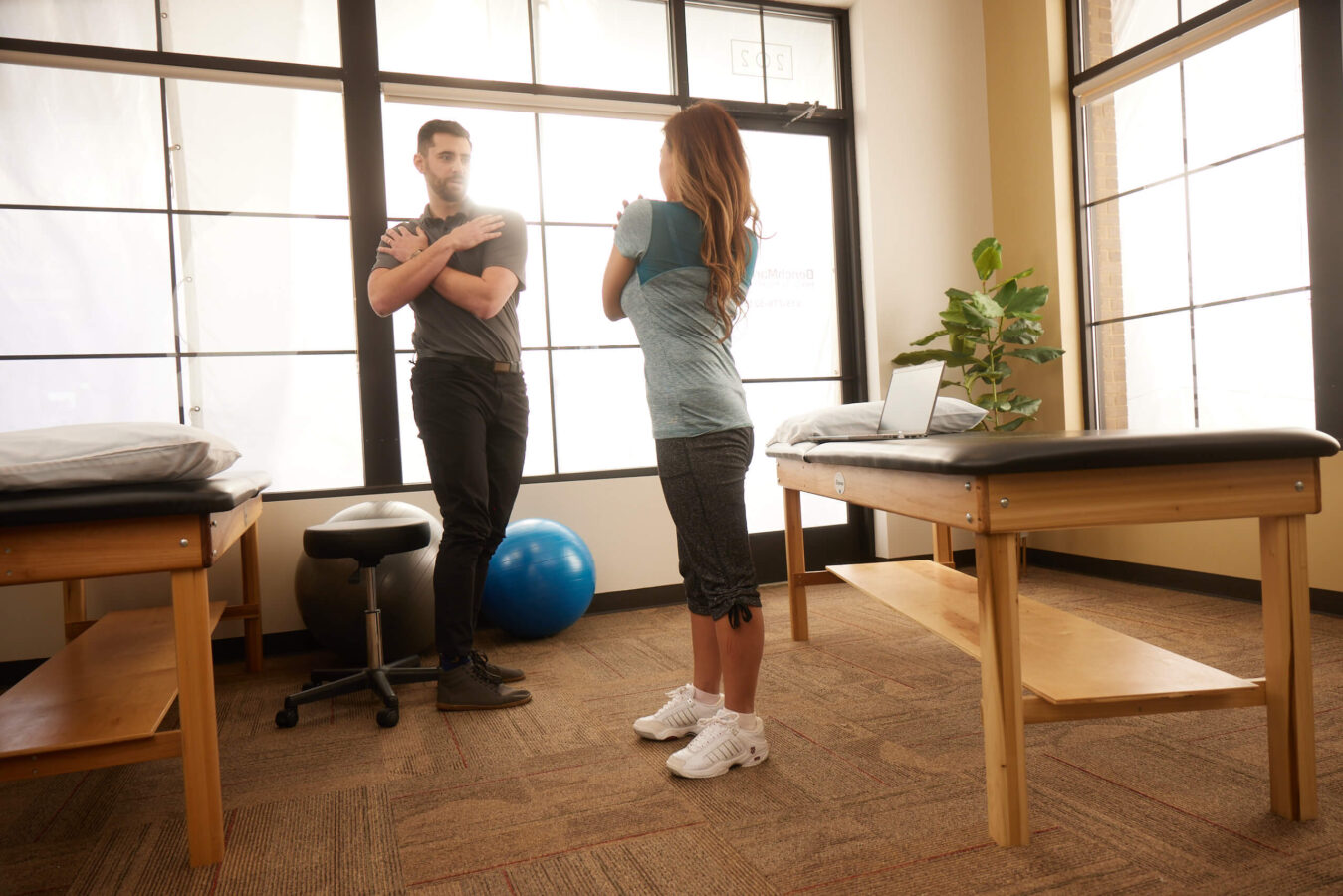
If you have frustrating pain, stiffness, or numbness, relief may be available in the form of a 60-year-old non-invasive therapy called the McKenzie Method. How does the McKenzie Method work? This physical therapy technique is a comprehensive approach to assessing and managing common types of musculoskeletal pain—without medication and without surgery.
Keep reading to learn more about this simple yet effective approach to pain-relief through specific exercises, postures, and repeated movements.
New Zealand physiotherapist Robin McKenzie developed The McKenzie Method® of Mechanical Diagnosis and Therapy (MDT) more than 60 years ago. This system of care is used to alleviate acute, subacute, and chronic pain of the spine and extremities.
The McKenzie method focuses on treating the origin of most musculoskeletal pain: mechanical problems. By identifying the motion, position, or activity causing pain, it’s possible to correct it for lasting relief.
McKenzie therapy goes beyond many other forms of hands-on therapy because it teaches patients how to self-manage and control their pain using the postural guidance and exercises they learn in the clinic. This philosophy of patient empowerment is just one of the McKenzie Method’s many benefits.
Here are a few more reasons this approach is widely used for neck, back, and extremity pain. The McKenzie Method of MDT is:
The McKenzie Method has four key components. Let’s walk through each step to give you a better idea of what you can expect during treatment.
The McKenzie Method of MDT starts with a detailed assessment of your symptoms and how and when they manifest. During this evaluation, your physical therapist asks you to gently perform different movements and get into various positions. They’ll ask about your pain and how it changes throughout this process.
Repeated motions and positions are a signature part of MDT. Because the assessment is so thorough, your therapist can gain deeper insight into how and why you’re experiencing pain.
Next, your physical therapist classifies your condition based on the results of your assessment. They use this classification to formulate a program including repeated movements, targeted exercises, and sustained postures to achieve pain relief and improve mobility.
At this stage, your therapist also creates a self-management plan for you to follow at home and throughout your daily life to manage and prevent pain going forward.
Now it’s time to get moving. Your physical therapist teaches and guides you through simple, easy-to-do postures and exercises in the clinic and at home. While the time you spend in physical therapy is essential, the real work is done when you leave the office.
By performing your treatment plan multiple times a day, as opposed to just weekly or bi-weekly in the clinic, you’re going to see better results—faster. Your therapist has given you the knowledge and skills to improve your own health and wellness.
Prevention is the fourth stage of the McKenzie Method protocol. Now that you’ve learned how to self-treat your condition, take these tools with you throughout every stage of life to encourage healthy mechanics and pain-free movement!
McKenzie therapy is one pain management method that offers fast results when compared to some other physical therapy modalities. Many patients report a notable reduction in pain in as little as 1-3 weeks. Your physical therapist evaluates your progress from week to week and updates your treatment plan as needed to achieve optimal function and pain relief.
The McKenzie Method is ideal for patients with mechanical problems. It’s not suitable for patients with long-term neurological conditions, serious spinal fractures or compression, and those with weakened bones due to osteoporosis.
McKenzie therapy can be beneficial for patients with:
A physical therapy screening utilizing the McKenzie Method is the best way to find out if you’re a candidate for MDT. But remember, this is just one of the tools at your therapist’s disposal. Your physical therapy treatment plan is customized with the most-effective modalities to meet your unique needs and goals.
Find a physical therapy clinic near you to schedule your initial evaluation today.

